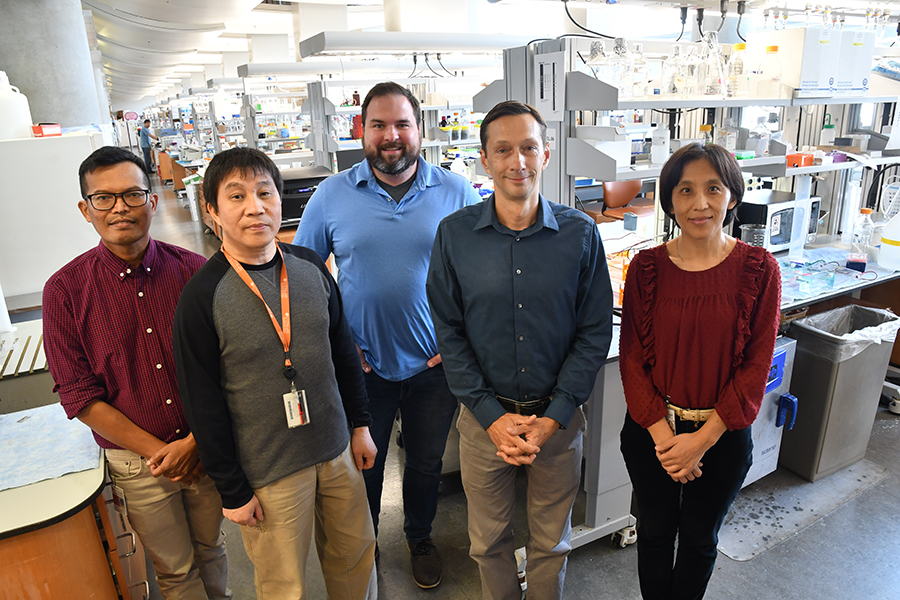Kolonin research on diabetes associated with obesity published

Recent research from the lab of Mikhail Kolonin, PhD, professor in the Brown Foundation Institute of Molecular Medicine, makes an important step toward understanding and confronting diabetes associated with obesity.
In previous studies, Kolonin and colleagues have developed an experimental compound revering obesity, termed Adipotide, which is based on a peptide KGGRAKD homing to white adipose tissue (WAT). They have discovered that systemically administered KGGRAKD binds to prohibitin-1 (PHB1), a protein exposed on the plasma membrane in endothelial cells of WAT, but not of other organs. This presents cell surface PHB1 as a potential drug target, however it’s function in fat tissue has remained unclear.
In their recent studies, Kolonin and colleagues reported that cell surface-expressed PHB1 (csPHB1) interacts with a long chain fatty acid (LCFA) transporter, CD36, in both adipose endothelial cells and adipocytes. To further investigate the physiological function of csPHB1, they analyzed murine models with PHB1 knocked-out (KO) in adipocytes (PHB1 Ad-KO) or in endothelial cells (PHB1 EC-KO).
“We have previously reported that PHB1 Ad-KO mice are lipodystrophic, partly due to a decreased capacity for LCFA uptake in WAT, which is compensated by glucose being used as their preferred energy source. PHD1 Ad-KO models also have defective brown adipose tissue (BAT), due to dysfunctional mitochondria,” said Kolonin, director of the Center for Metabolic and Degenerative Diseases.
In contrast, PHB1 EC-KO models have normal vasculature , normal BAT, higher insulin sensitivity, and increased glucose clearance when fed high fat diet. The researchers demonstrated that the efficacy of LCFA uptake in both WAT and BAT is decreased by PHB1 EC-KO, and fatty acid mobilization from WAT upon lipolysis induction was also found to be reduced in PHB1 EC-KO models.
In the study, the researchers concluded that PHB1 in endothelial cells promotes bi-directional LCFA transport and indirectly suppresses glucose metabolism. Therefore, PHB1 inhibition in the vasculature could be investigated as an approach to increase glucose utilization and clearance from circulation. This work sets the stage for future efforts of formulating systemically administered PHB1 inhibitors to be used in diabetes intervention approaches.
The study, titled “Endothelial Prohibitin Mediates Bi-directional Long Chain Fatty Acid Transport in White and Brown Adipose Tissues”, co-authored by Zhanguo Gao, PhD, Alexes Daquinag, PhD, and Yongmei Yu, and published in Diabetes, was supported by the National Institutes of Health grant 2R01DK088131 and by the Harry E. Bovay, Jr. Foundation.
Kolonin is the Harry E. Bovay, Jr. Distinguished University Chair in Metabolic Disease Research at McGovern Medical School. He is also on the faculty of The University of Texas Graduate School of Biomedical Sciences at Houston.